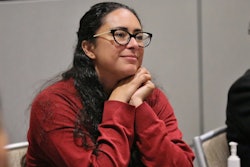When it comes to his teaching load, Dr. Langston Clark has few complaints.
“It can be lighter,” he says of the three classes that he teaches at the University of Texas at San Antonio (UTSA) as a newly appointed tenure-track faculty member. “But it’s not too bad.”
An assistant professor in the Department of Kinesiology, Health, and Nutrition, Clark is faring far better than many of his colleagues at other financially strapped institutions who teach as many as four or five classes each semester. Many also advise dozens of students and serve on several college committees.
“I received a course release last semester,” says Clark, who was hired at UTSA in 2014, after completing a Ph.D. in curriculum and instruction at The University of Texas at Austin. “The university has allowed me to teach the same classes every semester.”
Over the years, UTSA — a Hispanic-serving institution — has increasingly been pushing its tenure-track faculty to crank out academic books and publish in peer-reviewed journals, according to officials. It’s a trend that’s becoming more commonplace at institutions that once placed teaching over service and research.
That trend is likely to continue, experts say, particularly in the wake of rising budgetary costs and the refusal by many colleges and universities to add tenure-track teaching lines.
The task of balancing teaching, service and research responsibilities is important for new faculty members who hope to have longevity within the academy, says Clark. “I came into my position prepared to do research,” he says. “Graduate school prepared me for that.”















